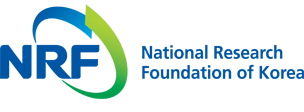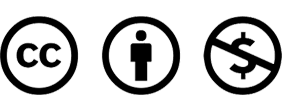-
Original Research Article

-
Relationship between Rice Yield in South Korea and El Niño Events that Occurred During the Rice Growing Season
벼 작기중 발생한 El Niño와 국내 벼 작황과의 관계
-
Hyeon-Seok Lee, Seo-Yeong Yang, Jae-kyeong Baek, Yeong-Seo Song, Ju-Hee Kim, So-Hye Cho, Ji-Young Shon, Jae-Ki Chnag, Junhwan Kim
이현석, 양서영, 백재경, 송영서, 김주희, 조소혜, 손지영, 장재기, 김준환
- After the strongest El Niño since 2015 occurred in 2023, there has been a growing interest in understanding its impacts on rice …
- After the strongest El Niño since 2015 occurred in 2023, there has been a growing interest in understanding its impacts on rice yield in South Korea. We investigated the impact of El Niño during the rice-growing season on rice yield by analyzing the correlation between detrended rice yield data and ONI (Oceanic Niño Index) values exceeding 0.5. The results show a positive correlation between ONI intensities and detrended rice yields. Furthermore, we found that variations in sunshine duration, precipitation, and typhoon activity affect detrended yield values positively and negatively. This pattern was similar to the classification of El Niño into Cold Tongue El Niño and non-Cold Tongue El Niño, which showed positive and negative detrended rice yield values, respectively. This observation suggests that predicting yield based on ONI intensity during Cold Tongue El Niño years may be feasible to some extent. - COLLAPSE
-
Relationship between Rice Yield in South Korea and El Niño Events that Occurred During the Rice Growing Season
-
Original Research Article

-
Changes in Rice Growth Characteristics during Intermittent Drainage Period using Multiple Sensing Technology
다중 센싱 기반 중간물떼기 기간에 따른 벼 생육 특성 변화
-
Woo-jin Im, Dong-won Kwon, Hyeok-jin Bak, Ji-hyeon Lee, Sungyul Chang, Wan-Gyu Sang, Nam-Jin Chung, Jung-il Cho, Woon-Ha Hwang
임우진, 권동원, 박혁진, 이지현, 장성율, 상완규, 정남진, 조정일, 황운하
- The risk of global warming is increasing due to rapid climate change and increased greenhouse gas (GHG) emissions. Among the greenhouse gases, …
- The risk of global warming is increasing due to rapid climate change and increased greenhouse gas (GHG) emissions. Among the greenhouse gases, methane has a strong warming effect; in particular, 51.2% of the agricultural sector’s methane emissions are from flooded rice fields. According to the current standard rice cultivation method, rice is grown during the maximum tillering stage with an intermittent drainage period of approximately 2 weeks. During the flooding period, methane- producing bacteria are active, but the activity of methane-producing bacteria and the amount of methane gas produced are reduced when the soil becomes oxidized through watering. Accordingly, this study used multiple-sensing technology to analyze the growth response according to the intermittent drainage period and to identify the extended intermittent drainage period with less impact on rice production. The equipment used for growth observations included NDVI, PRI, and IR sensors. The results confirmed that growth indices related to stress, such as NDVI and PRI, were not significantly different from those of the control when treated within 3 weeks of drainage, but drastically decreased when the drainage period was extended beyond 4 weeks. These results appear to result from the fact that soil water content (volumetric water content) also dropped to below 20% 4 weeks after irrigation, creating actual drought stress conditions. The 22nd day after treatment, when the soil moisture content reached 20%, was considered the point in time when drought stress conditions were formed. The point at which the SPAD value decreased to 0.6% of normal was estimated to be 23.5 days after treatment by using the regression equation between NDVI and SPAD. - COLLAPSE
-
Changes in Rice Growth Characteristics during Intermittent Drainage Period using Multiple Sensing Technology
-
Original Research Article

-
Change of Growth and Yield Characters in Rice at Different Transplanting Densities under Agrivoltaics
영농형 태양광 발전 시스템 하부 벼 재배 시 재식밀도별 생육 및 수량변화
-
Woon-Ha Hwang, Min-Ji Lee, Jae-Hyeok Jeong, Hoe-Jung Jeong, Wan-Gue Sang, Seong-Yul Jang, Dong-Won Kwon, Woo-Jin Im, Heok-Jin Park, Ji-Hyen Lee
황운하, 이민지, 정재혁, 정회정, 상완규, 장성율, 권동원, 임우진, 박혁진, 이지현
- Recently, interest in renewable energy development has been increasing to promote carbon-neutral policies. Agrivoltaic is a solar power generation facility with the …
- Recently, interest in renewable energy development has been increasing to promote carbon-neutral policies. Agrivoltaic is a solar power generation facility with the potential to aid in meeting carbon-neutral policies. It has the advantage of generating electricity while farming takes place, but it also has the disadvantage of reducing crop yield and cultivation safety. We analyzed the rice yield, quality, and stem growth characteristics according to different transplanting densities under agrivoltaics. Under agrivoltaics, the number of rice panicles was reduced by the shading effect, but the reduction was lower under 60 hills than under 80 and 100 hills. Brown rice perfect ratio was increased under 60 hills under agrivoltaics. Brown rice yield did not differ significantly between 60 and 80 hills under agrivoltaics. However, stem dry weight by unit(mg/cm) in each internode showed highest under 60 hills compared to 80 and 100 hills under agrivoltaics. Therefore, 60 hill density was considered appropriate to ensure cultivation safety and yield when cultivated rice under agrivoltaics. - COLLAPSE
-
Change of Growth and Yield Characters in Rice at Different Transplanting Densities under Agrivoltaics
-
Original Research Article

- Phenotypic Diversity among 575 Cultivated Soybean Landraces Collected from Different Provinces in Korea: A Multivariate Analysis
- Kebede Taye Desta, Yu-Mi Choi, Young-ah Jeon, Myoung-Jae Shin, Hye-myeong Yoon, Wang XiaoHan, Hyeon-seok Oh, Young-Wang Na, Ho-cheol Ko, Na-young Ro, Jung Yoon Yi
- This study investigated 575 cultivated soybean landraces from different provinces in Korea, using 17 key agromorphological traits. The studied soybeans showed wide …
- This study investigated 575 cultivated soybean landraces from different provinces in Korea, using 17 key agromorphological traits. The studied soybeans showed wide variations in both qualitative and quantitative traits, signifying the existence of genetic diversity. The standardized Shannon-Weaver index (H') ranged from 0.3 to 1.0, with seed-related traits having an H' value higher than 0.7. Similarly, quantitative traits showed significant variation, with the coefficient of variation ranging from 7.2% for days to maturity (DM) to 62.3% for the number of pods per plant (PPP). In terms of province, the Gyeongsangbuk-do and Gyeongsangnam-do accessions differed from the other accessions, with higher proportions of green and yellow seed coats and lower proportion of black hilums. Gyeongsangnam-do accessions also showed early maturation and flowering but had the lowest average one-hundred seeds weight (HSW). In contrast, Jeollanam-do accessions flowered and matured late but had the highest average seed weight per plant (SWPP). Hierarchical cluster analysis grouped the soybeans into 12 clusters, and further statistical analysis showed significant variations in all quantitative traits (p < 0.05). Principal component analysis grouped the accessions based on the clusters. DM, PPP, HSW, and SWPP were identified as major contributors to the observed variance along the axes of the first two principal components. Correlation analysis revealed significant associations between maturity and yield-related traits. Based on their relative performance, 37 promising accessions were identified. Overall, this study highlights the diversity of recently cultivated Korean soybean landraces and provides opportunities for future metabolomic and genomic studies. - COLLAPSE
-
Original Research Article

-
Phylogenetic Classification and Evaluation of Agronomic Traits of Korean Wheat Landrace (Triticum aestivum L.)
국내 재래종 밀 계통 분리와 농업형질 특성 평가
-
Yumi Lee, Sejin Oh, Seong-Wook Kang, Chang-Hyun Choi, Jongtae Lee, Seong-Woo Cho
이유미, 오세진, 강성욱, 최창현, 이종태, 조성우
- This study was conducted to evaluate agronomic traits and classify phylogenetic characteristics of Korean wheat landraces (KWLs) collected in Gyeongnam province. We …
- This study was conducted to evaluate agronomic traits and classify phylogenetic characteristics of Korean wheat landraces (KWLs) collected in Gyeongnam province. We used the squash method for chromosome observation, image analysis to examine seed characteristics, and genotyping using commercial single-nucleotide polymorphism chips to construct a phylogenetic tree. All KWLs contained 42 chromosomes and two pairs of microsatellites as observed in Keumgang, a Korean wheat cultivar. All KWLs showed smaller seed traits compared with those of Keumgang, although KWL-3 had a larger embryo length than that of Keumgang. Among agronomic traits compared with those of Keumgang, all KWLs had a late heading date and ripening period except for KWL-3, which showed the smallest culm and spike length. KWL-1 had the lowest tiller, highest floret, and grain number. All KWLs showed a lower thousand grain weight than that of Keumgang because of their smaller seeds. In the variation of variety and area, the heading date, ripening period, tiller number, and floret number were affected by the cultivation area, whereas the culm length, spike length, and 1000 grain weight were affected by the variety. Correlation distribution analysis showed differences in agronomic traits according to the cultivation area, and the heading date was positively correlated with the culm length and floret number in three cultivation areas. Principal component analysis explained that the heading date had a positive relationship with the ripening period and floret number and a negative relationship with the tiller number. Principal component analysis also revealed that all KWLs had a lower thousand grain weight than that of Keumgang. Phylogenetic tree showed that KWL-1 was near KWL-3, while KWL-2 was near KWL-4. All KWLs were genetically near the Korean wheat cultivars milsung and saeol, whereas they were genetically far from the Korean wheat cultivars goso and olgrue. - COLLAPSE
-
Phylogenetic Classification and Evaluation of Agronomic Traits of Korean Wheat Landrace (Triticum aestivum L.)
-
Original Research Article

-
Efects of Biodegradable Mulching Films Containing Rice Powder on Sweetpotato Growth
쌀 분말이 함유된 생분해성 멀칭필름이 고구마 생육에 미치는 영향
-
Sin Young Park, Ju Hyun Im, Eun Byul Go, Kil Ja Kim, Jae Min Park, Dong Kwan Kim
박신영, 임주현, 고은별, 김길자, 박재민, 김동관
- In this study, two types of biodegradable film prototypes were produced using plastic resin containing rice powder. The application of these biodegradable …
- In this study, two types of biodegradable film prototypes were produced using plastic resin containing rice powder. The application of these biodegradable films in sweetpotato (Ipomoea batatas L. Lam) fields and their impacts of plant growth, yield, and the soil environment were assessed, in comparison with Polyethylene (PE) film. The light transmittance of the biodegradable film containing 30% of 350 mesh rice powder (BF30-350RP) was 0.8%, which was lower than the 2.0% light transmittance of the biodegradable film containing 40% of 500 mesh rice powder (BF40-500RP) and 2.7% light transmittance of PE film. Surface temperature measurements on clear day indicated that the PE film exhibited the lowest temperature, with the minimal difference observed between BF40-500RP and BF30-350RP. Assessment of the damage ratio resulting from agricultural work revealed a ranking of 0.4% for the PE film, 3.3% for BF500-400RP, and 5.3% for BF350-30RP. Visible decomposition of BF40-500RP and BF30-350RP commenced after 40 and 30 days of outdoor exposure, reaching 62.3% and 70.4% decomposition at 90 days post-exposure, respectively. The decomposition of biodegradable films applied to sweetpotato fields progressed more slowly in BF40-500RP than in BF30-350RP. The BF40-500RP film on the surface of the ridges was decomposed by 5%, 30%, 55%, and 90% after 30, 60, 90, and 120 days after planting sweetpotato cuttings, respectively. Both types of biodegradable films at the ridge and furrow borders were completely decomposed after 75 days of sweetpotato planting. In a field where the surface was sealed by mulching without growing sweetpotatoes, the soil moisture and its deviation were lower in the order of PE film, BF40-500RP, and BF30-350RP, but the differences were not significant. The soil temperature was higher for PE film mulching than for the biodegradable films containing rice powder, but the differences were small. Two months after sweetpotato planting, the daily average soil moisture decreased by 2.5%point for BF30-350RP mulching, 1.5%point for BF40-500RP mulching, and 1.1%point for PE film mulching over seven days. Soil temperature was similar for both biodegradable film mulches, but increased steadily for the PE film mulch, reaching a daily average of 0.1°C higher than for the biodegradable films. Sweetpotato vine growth and tuber yield were similar for all the mulching films tested. - COLLAPSE
-
Efects of Biodegradable Mulching Films Containing Rice Powder on Sweetpotato Growth
Journal Informaiton
 The Korean Journal of Crop Science
The Korean Journal of Crop Science
Journal Informaiton
Journal Informaiton - close
 The Korean Journal of Crop Science
The Korean Journal of Crop Science









